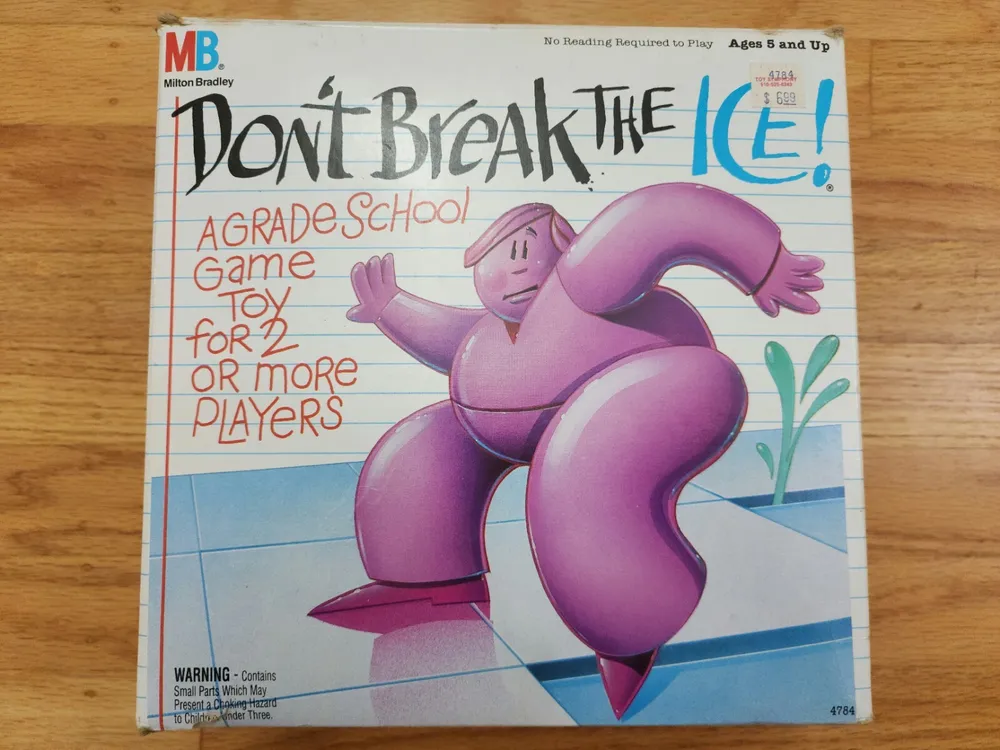Don’t Break the Ice (1968)
Don’t Break the Ice
Don’t Break the Ice is a children’s tabletop game for two to four players ages 3 and up. It was first marketed by Schaper Toys in 1968 and was sold to Hasbro subsidiary Milton Bradley in 1986. The game is still in production, and special editions were released in conjunction with the films Frozen (2013) and Frozen II (2019).
Why is Don’t Break the Ice Popular?
Don’t Break the Ice is a popular game for children due to its simple Gameplay Mechanics of Don’t Break the Ice and the excitement it generates as players take turns tapping out the blocks of ice, trying not to make the penguin fall through. It is also significant as a classic tabletop game that has been enjoyed by generations of children since its release in 1968.
Game Components of Don’t Break the Ice
Plastic “ice blocks”StandOne miniature plastic hammer for each playerOne ice block is larger than the rest and has a plastic character standing on it.
Game Setup of Don’t Break the Ice
To set up the game, the stand is turned upside down, and the ice blocks are placed into the frame so that the shared uniform compression of the blocks pressed against each other will cause them to stay in place when the stand is turned upright.
Gameplay Mechanics of Don’t Break the Ice
The players take turns removing ice blocks by tapping with the hammers. The game ends when one player causes the block with the character figure to fall through. The player who took the turn before that one wins the game.
Game Objective of Don’t Break the Ice
The objective of the game is to keep the penguin character on top of the ice by tapping out the ice blocks one by one, but as the game goes on, the ice blocks start falling. One wrong block, and the penguin falls through.
We are supported by our audience. When you purchase through links on our site, we may earn an affiliate commission, at no extra cost for you. Learn more.

